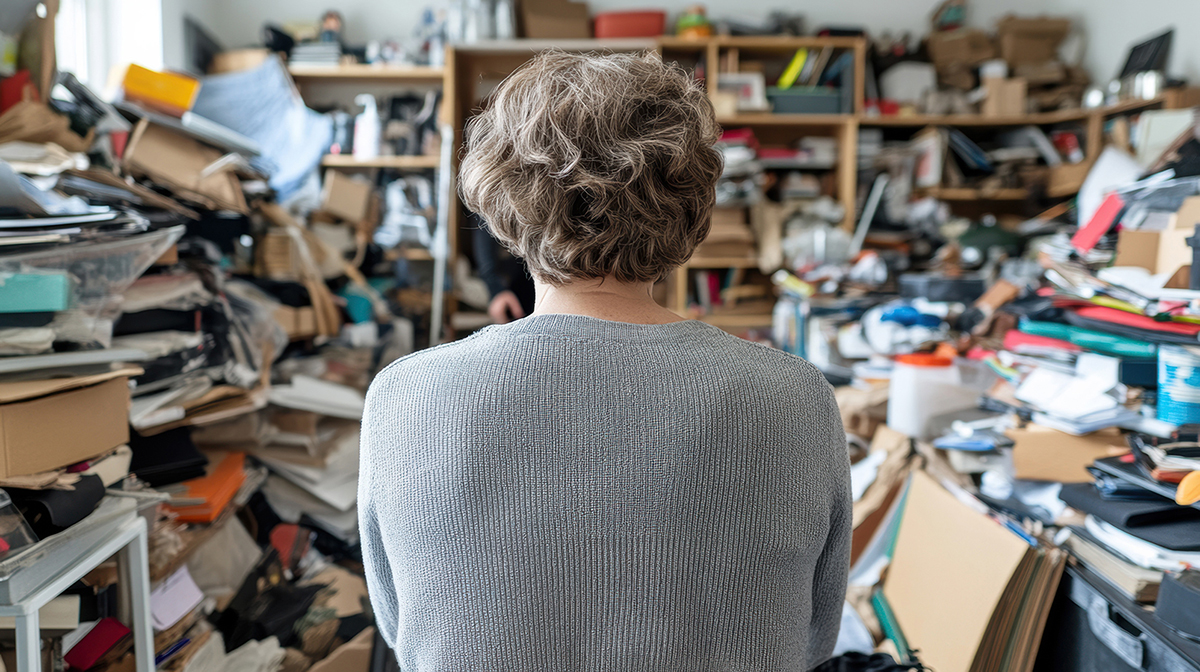Article by Gwen Jones, Department of Family Services
(Posted 2025 April)

 Hoarding Disorder is a mental health issue that many people don't fully understand. To help our community better understand the disorder and its impacts, the Golden Gazette is publishing a series of five articles addressing the issue. Our aim is to increase knowledge, reduce negative judgments, improve safety, and offer information and resources to help those affected by this condition and their families.
Hoarding Disorder is a mental health issue that many people don't fully understand. To help our community better understand the disorder and its impacts, the Golden Gazette is publishing a series of five articles addressing the issue. Our aim is to increase knowledge, reduce negative judgments, improve safety, and offer information and resources to help those affected by this condition and their families.
What is Hoarding Disorder?
Hoarding Disorder is a mental health condition, where people collect an excessive number of personal possessions and/or trash and feel a strong need to keep everything. Additionally, they struggle making decisions to throw things away despite the value of the items. Over time, the number of items can become so large that parts (or all) of the home lose their functionality. Eventually, the conditions in the home may become dangerous for the occupants, their pets and possibly even for people living around them.
According to the American Psychiatric Association, Hoarding Disorder affects approximately two to five percent of the population. It has been diagnosed in people of all ages, races, genders, nationalities, education levels and economic backgrounds. Hoarding usually starts between ages 11 and 15 and gets worse with age. There are three times as many adults aged 55 to 94 with Hoarding Disorder. By middle age, hoarding can be severe and hard to treat.
People with Hoarding Disorder usually don’t ask for help on their own. In fact, only 15% realize they have a problem. There are three ways they might see their situation:
- They know there is a problem but don’t make any changes.
- They might see part of the problem but don't understand the dangers or aren't willing to change.
- They think their surroundings and behaviors are normal, even when they have serious problems.
The strong attachment of a person to their things can indicate that they have a Hoarding Disorder. They often form strong emotional attachments to possessions and feel safe and comfortable surrounded by them. Suggestions to throw something away can cause fear and anxiety, so they avoid doing it.
Who is at Risk of Developing Hoarding Disorder?
While anyone can be diagnosed with Hoarding Disorder, some people are more prone to the disorder than others. Children of parents with Hoarding Disorder are at high risk. About 50% of people who hoard have a family member who also hoards.
Certain personality traits also increase the risk, such as:
- Difficulty making decisions, leading to impulsiveness or procrastination.
- Being too detail-oriented or a perfectionist.
- Having trouble organizing things.
- Being vulnerable.
- Having trouble planning or staying focused on tasks.
Hoarding Disorder can occur in people with health conditions that affect mental cognition, like dementia and Alzheimer's. Additionally, it can coexist with other health conditions, including depression, general anxiety disorder, obsessive-compulsive disorder, and attention-deficit/hyperactivity disorder.
A sudden stressful event can also be a trigger. These events include the death of a loved one, moving out of a childhood home, divorce, eviction, or losing possessions in a natural disaster.
Signs of Hoarding Disorder
It can be hard to tell the difference between hoarding, collecting, and clutter. Sometimes, people who hoard items start off as collectors. Collectors keep things of value, but people with hoarding disorder may value many kinds of things, even things most people would throw away. Commonly hoarded items include magazines, newspapers, clothing, grocery bags, trash, and food. The change happens when they keep acquiring more items without getting rid of anything, making their collections unmanageable. Hoarded items are usually unorganized and piled up, while collectors' items are organized and displayed neatly.
Most people have some clutter in their homes, which is just a bit of disorganization and doesn't cause major problems. In hoarding situations, the space becomes unusable and can lead to serious safety issues because so many items are packed into every available space. A truly hoarded home is a case of extreme clutter, where rooms do not function as they were intended for sleeping, bathing and personal hygiene, cooking, and for living. This is when things turn dangerous.
In the May issue of the Golden Gazette, we will explore the dangers of hoarding and how Fairfax County agencies are working to ensure the safety of homes and residents in our community.
This article is part of the Golden Gazette monthly newsletter which covers a variety of topics and community news concerning older adults and caregivers in Fairfax County. Are you new to the Golden Gazette? Don’t miss out on future newsletters! Subscribe to get the electronic or free printed version mailed to you. Have a suggestion for a topic? Share it in an email or call 703-324-GOLD (4653).

